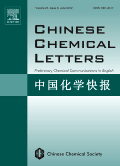
CHINESE CHEMICAL LETTERS
Scope & Guideline
Connecting Ideas, Transforming Chemical Science.
Introduction
Aims and Scopes
- Materials Science and Nanotechnology:
The journal publishes research on the synthesis, characterization, and application of novel materials, including nanomaterials, polymers, and composites, with a focus on their structural, optical, and electronic properties. - Catalysis and Reaction Mechanisms:
A significant portion of the journal's articles discusses catalytic processes, including heterogenous and homogeneous catalysis, with insights into reaction mechanisms and efficiency improvements. - Environmental Chemistry and Sustainability:
Research addressing the degradation of pollutants, development of green chemistry processes, and sustainable materials is a key focus, showcasing advancements in wastewater treatment and resource recovery. - Biochemistry and Medicinal Chemistry:
The journal includes studies on drug design, delivery systems, and the biochemical mechanisms of action, particularly those involving nanomaterials and biomolecules. - Theoretical Chemistry and Computational Studies:
Publications often feature computational chemistry studies that provide theoretical insights into chemical reactions, material properties, and molecular interactions.
Trending and Emerging
- Green Chemistry and Sustainable Processes:
There is a growing emphasis on research that promotes environmentally friendly practices in chemistry, including sustainable synthesis, waste reduction, and renewable resources. - Nanotechnology and Nanomaterials:
Research related to the development and application of nanomaterials is on the rise, particularly in fields such as drug delivery, environmental remediation, and catalysis. - Photocatalysis and Light-Driven Reactions:
The trend toward utilizing light as an energy source for chemical reactions is increasingly prevalent, with studies showcasing innovative photocatalytic systems and their applications. - Electrocatalysis and Energy Storage:
Research focusing on electrocatalytic processes for energy conversion and storage, particularly in fuel cells and batteries, is becoming more prominent as the demand for sustainable energy solutions rises. - Biomedical Applications of Chemistry:
There is a noticeable increase in studies that integrate chemistry with biomedical applications, particularly in drug delivery systems, imaging techniques, and targeted therapies.
Declining or Waning
- Traditional Organic Synthesis:
Research centered around conventional organic synthesis methods has become less prominent, as newer methodologies and green chemistry approaches gain traction. - Inorganic Chemistry:
Although still relevant, the volume of studies focused on traditional inorganic compounds and their applications has decreased, possibly due to a shift towards more interdisciplinary and applied research. - Physical Chemistry Techniques:
The number of publications utilizing standard physical chemistry techniques for analysis appears to be waning, as researchers increasingly adopt more advanced and novel methods. - Conventional Drug Discovery Processes:
The journal has seen fewer articles focusing on traditional drug discovery protocols, with a noticeable shift towards innovative delivery systems and nanomedicine. - Basic Analytical Chemistry:
The frequency of articles presenting basic analytical chemistry techniques has declined, replaced by more sophisticated or interdisciplinary approaches in analytical methods.
Similar Journals
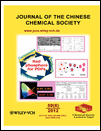
JOURNAL OF THE CHINESE CHEMICAL SOCIETY
Bridging Theory and Practice in Chemical SciencesJOURNAL OF THE CHINESE CHEMICAL SOCIETY, published by WILEY-V C H VERLAG GMBH, is a vital resource in the field of chemistry, focusing on a broad array of topics pertinent to general chemistry and its advancing sub-disciplines. Established in 1954 and running through 2024, this journal serves as a significant platform for the dissemination of high-quality research, showcasing innovative findings and developments within the chemical sciences. With its Q3 category ranking and positioning at Rank #203 in General Chemistry per Scopus, it reflects the journal's commitment to research excellence and impact. While not an open-access publication, it ensures accessibility to a global audience, making it an essential tool for researchers, professionals, and students alike seeking to stay informed and engaged in the evolving landscape of chemistry.

DOKLADY CHEMISTRY
Bridging theory and practice in the world of chemistry.DOKLADY CHEMISTRY is an esteemed academic journal published by MAIK NAUKA/INTERPERIODICA/SPRINGER, focusing on the dynamic field of chemistry. Established in 1996, this journal serves as a significant platform for disseminating cutting-edge research, reviews, and significant developments in various areas of chemistry, including but not limited to general and miscellaneous chemistry. Currently indexed with an ISSN of 0012-5008 and E-ISSN of 1608-3113, DOKLADY CHEMISTRY maintains a commitment to academic rigor and integrity, contributing critical insights to the scientific community. Despite its Q4 ranking in the 2023 Chemistry category and a Scopus rank of #314 out of 408, this journal remains an important resource for researchers, professionals, and students eager to explore emerging trends and innovative methodologies in the field. The journal operates under a model that supports comprehensive scholarly communication, making it a key fixture among established chemistry publications.
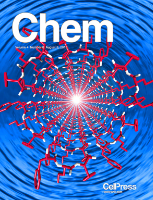
Chem
Exploring the Depths of Biochemistry and BeyondChem, published by CELL PRESS, is a renowned academic journal that has rapidly established itself as a leading platform for cutting-edge research in diverse areas such as biochemistry, chemical engineering, materials chemistry, and environmental chemistry. Released under the ISSN 2451-9294, this esteemed journal has achieved an impressive Q1 category ranking across multiple disciplines in 2023, highlighting its significant impact and prominence within the academic community. With a strong focus on innovative studies and interdisciplinary approaches, Chem fosters a vibrant dialogue among researchers, professionals, and students, making it an indispensable resource for those seeking to advance their knowledge and contribute to the evolving field of chemistry. As an open access journal, it aims to democratize knowledge, ensuring that critical research is accessible to a global audience. With its headquarters based in Cambridge, MA, it continues to lead the charge in the dissemination of pivotal findings that shape our understanding of chemical sciences.
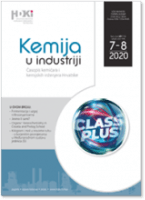
Kemija u Industriji-Journal of Chemists and Chemical Engineers
Fostering collaboration in the realm of chemical engineering.Kemija u Industriji - Journal of Chemists and Chemical Engineers is an esteemed open-access journal published by the HRVATSKO DRUSTVO KEMJIJSKIH INZENJERA I TEHNOLOGA, dedicated to advancing the field of chemical engineering and chemistry. Since its establishment, this journal has served as a pivotal platform for the dissemination of innovative research, technical development, and interdisciplinary studies within the chemical industry. With its ISSN 0022-9830 and E-ISSN 1334-9090, the journal has established a significant international presence, despite its historical discontinuation from Scopus coverage. Researchers and professionals seeking to contribute to or stay updated on the latest advancements in chemical processes, materials science, and engineering practices will find this journal invaluable. Its commitment to open access since 2004 ensures that knowledge is freely available, enhancing collaboration and learning among students, scientists, and engineers alike. With a legacy that reflects the rich tradition of chemical innovation, Kemija u Industriji continues to be a vital resource, promoting the scientific community's synergy and inspiring future breakthroughs.

JOURNAL OF CHEMICAL RESEARCH
Elevating Chemistry: A Platform for Groundbreaking Studies.JOURNAL OF CHEMICAL RESEARCH, published by SAGE PUBLICATIONS LTD, serves as a pivotal platform for scholars and practitioners in the field of Chemistry. With its ISSN 1747-5198 and E-ISSN 2047-6507, this journal has established itself as a reliable source of innovative research since its inception in 2000. The journal's comprehensive scope encompasses various facets of chemical research, providing a broad spectrum of articles that foster scientific advancement and technological innovation. Ranked in the Q3 tier of miscellaneous chemistry journals in 2023, with a Scopus rank of #246 out of 408, it represents a solid outlet for emerging and established researchers alike. Although currently not an open-access journal, its rigorous peer-review process ensures that only high-quality studies are published, catering to the academic and professional community's demand for credible and impactful findings. Positioned in the vibrant research landscape of the United Kingdom, the JOURNAL OF CHEMICAL RESEARCH is dedicated to expanding the frontiers of chemical sciences and is an essential resource for anyone committed to advancing this dynamic field.

HELVETICA CHIMICA ACTA
Fostering Collaboration in Chemical ResearchHELVETICA CHIMICA ACTA, published by WILEY-V C H VERLAG GMBH, stands as a pivotal journal in the fields of chemistry and chemical research. Established in 1918, this esteemed journal spans a diverse array of topics, including biochemistry, catalysis, drug discovery, inorganic and organic chemistry, as well as physical and theoretical chemistry. With influence reflected in its noteworthy Q2 and Q3 quartile rankings across these categories as of 2023, HELVETICA CHIMICA ACTA continues to capture the interest of the global scientific community. Although not an open-access journal, it remains accessible through various academic institutions, ensuring broad reach and collaboration opportunities. Researchers, professionals, and students alike will find its meticulously peer-reviewed articles critical for advancing knowledge and fostering innovation within the chemical sciences. As the journal converges toward 2024, it remains committed to publishing high-quality, impactful research that supports the evolution of chemistry across its multifaceted disciplines.

JACS Au
Fostering collaboration through transformative scientific dialogue.JACS Au, published by the American Chemical Society, is a premier open access journal dedicated to advancing research in the rapidly evolving fields of analytical chemistry, organic chemistry, and theoretical chemistry. Since its inception in 2021, JACS Au has quickly established itself as a leading platform for high-quality research, reflected in its Q1 rankings across multiple categories for 2023, including Organic Chemistry and Analytical Chemistry. The journal focuses on innovative methodologies and applications that drive the discipline forward, making it an essential resource for researchers, professionals, and students alike. With an impressive Scopus ranking, consistently placing in the top tiers of its categories, and offering a broad range of access options for its readership, JACS Au aims to foster collaboration and disseminate transformative ideas that impact the global scientific community. Exploring diverse topics within chemistry, this journal provides a vital conduit for sharing groundbreaking research and enhancing scientific dialogue.

Canadian Journal of Chemistry
Uniting Scholars for a Brighter Chemical FutureWelcome to the Canadian Journal of Chemistry, a prominent publication dedicated to advancing the study of chemistry through original research and critical reviews. Published by Canadian Science Publishing, this journal has been a cornerstone of chemical research since its inception, covering a broad spectrum of topics within the field, including catalysis, organic chemistry, and general chemistry. With an ISSN of 0008-4042 and E-ISSN of 1480-3291, it provides a vital platform for researchers, professionals, and students to disseminate their findings and engage in scholarly discourse. Impact Factor is currently in development, with the journal classified in the Q4 category for catalysis and Q3 for miscellaneous chemistry fields, signifying its evolving contributions to the scientific community. The journal operates without an open access model, which ensures a rigorous peer-review process while maintaining subscription access for institutions and libraries. Located in Ottawa, Canada, the Canadian Journal of Chemistry continues to provide an invaluable resource for those dedicated to the scientific pursuit of chemistry, making significant strides in fostering interdisciplinary approaches and innovative research methodologies.
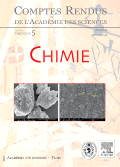
COMPTES RENDUS CHIMIE
Advancing Chemical Knowledge, One Article at a Time.COMPTES RENDUS CHIMIE, published by the prestigious Académie des Sciences in France, stands as a significant journal in the fields of chemistry and chemical engineering. With an ISSN of 1631-0748 and an E-ISSN of 1878-1543, this open-access journal has been committed to disseminating high-quality research since its transition to open access in 2020. Featuring a diverse array of studies, the journal covers innovative research trends and applications, while maintaining a Q3 category ranking in both Chemical Engineering (miscellaneous) and Chemistry (miscellaneous) as of 2023. Its Scopus rankings, positioning at #251 out of 408 in general chemistry and #169 out of 273 in general chemical engineering, highlight its growing impact within the scientific community. Authored by a global cohort of scientists and researchers, COMPTES RENDUS CHIMIE is dedicated to the advancement of knowledge and sharing insights that are vital for ongoing research and development in the chemical sciences. Located in the heart of Paris at 23 Quai de Conti, 75006, France, the journal is an essential resource for those passionate about chemistry and engineering disciplines, fostering collaboration and innovation across the world.

CHEMICAL COMMUNICATIONS
Elevating the discourse in chemical research and applications.Chemical Communications, published by the esteemed Royal Society of Chemistry, is a prominent journal within the field of chemical science, focusing on the dissemination of cutting-edge research in a variety of sub-disciplines including catalysis, materials chemistry, and electronic materials. Operating without an open access model, this journal provides critical insights from contributors around the globe, enhancing our understanding of complex chemical interactions and innovative applications. Ranked in the top quartile for several categories such as Ceramics and Composites, and Metals and Alloys, Chemical Communications boasts impressive Scopus rankings, securing strong positions across multiple fields and showcasing its influence within the scientific community. The journal is committed to advancing knowledge and fostering collaboration among researchers, professionals, and students, making it an invaluable resource for those looking to stay abreast of the latest advancements in chemistry and materials science. With a publication history dating back to 1965 and continuing into 2024, its rich archive serves as a vital repository of chemical research and development.